The island of St. Kitts in the Eastern Caribbean is a popular port in the cruise itinerary. We loved our stop here and our day trip tour. Brimstone Hill Fortress National Park is one of the island’s best preserved example of a military fortification.
In order to make the most of our day in St.Kitts, we went on a “Best of St. Kitts” tour which took about four hours. We spent most of our time at the Brimstone Hill Fortress which was so worthwhile.
Known as the “Gibraltar of the West Indies”, this well-preserved complex is an amazing example of British military architecture from the 17th and 18th centuries. It also offers some spectacular views from every direction.
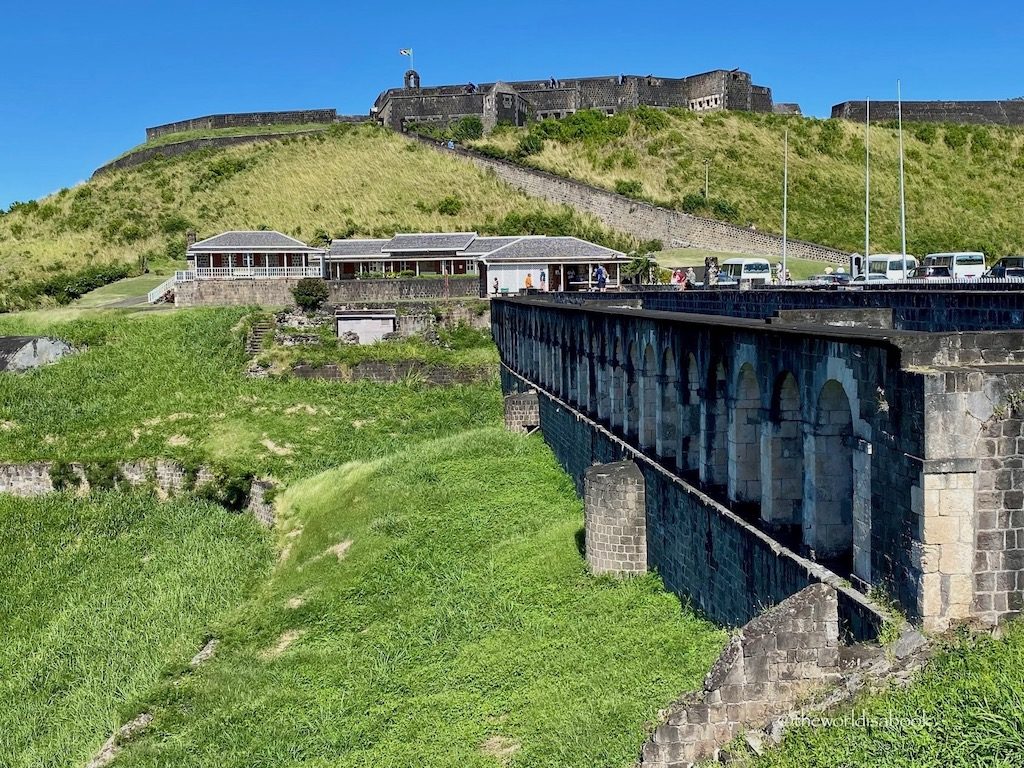
History of Brimstone Hill Fortress
St. Kitts (officially known as St. Christopher) and the neighboring island of Nevis is a two-island nation that gained its full independence in 1983. Europeans first colonized this island in the Caribbean.
During the late 17th century, African slaves were brought to St. Kitts. The French and the English shared the island and as a result, constantly fought to dominate the area.
The British started construction on the Brimstone Hill Fortress in 1690. They mounted the first cannon here in an effort to drive the French out.
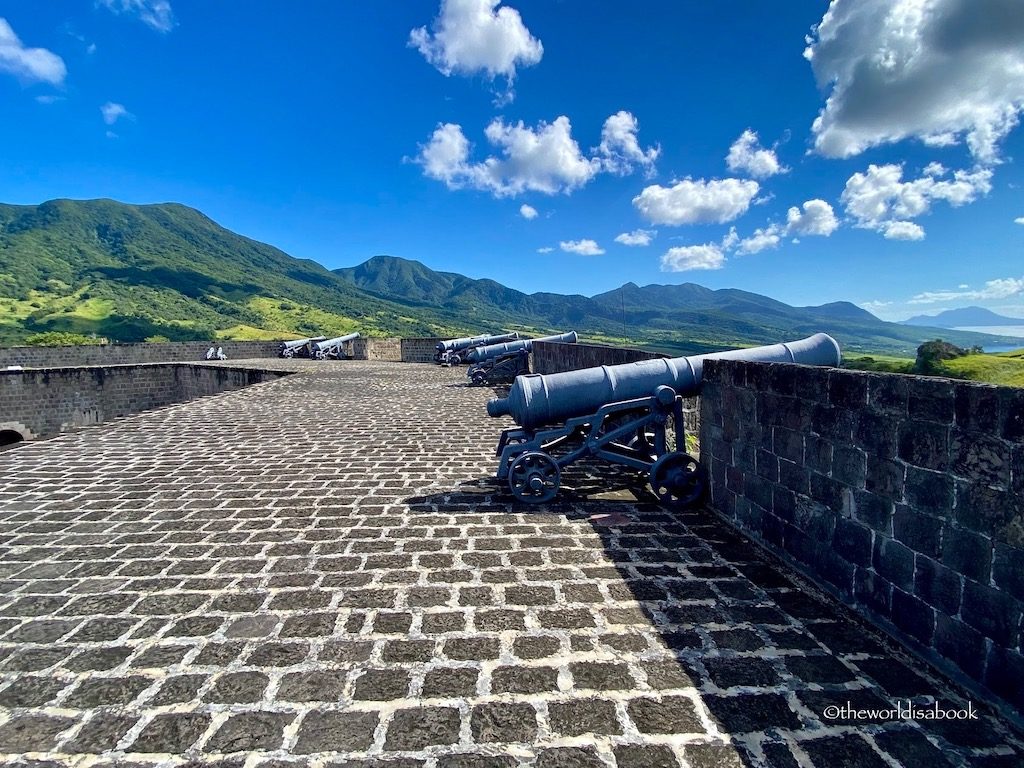
Construction of Brimstone Hill Fortress
The British Army Engineers designed the fortress. African slave workers painstakingly built and maintained. They built by hand with stones carried from the quarries at the bottom. What an incredible accomplishment and an architectural feat given the times and conditions the slaves had to build it.
It took over 100 years to complete. In 1782, France seized the fortress. But, Treaty of Versailles articles in 1783 returned the island and fortress to the British.
The fortress served its purpose for many years but fell in disarray after abandonment. In the 1850s, the British military abandoned it and dismantled many buildings after many of them were reassigned elsewhere.
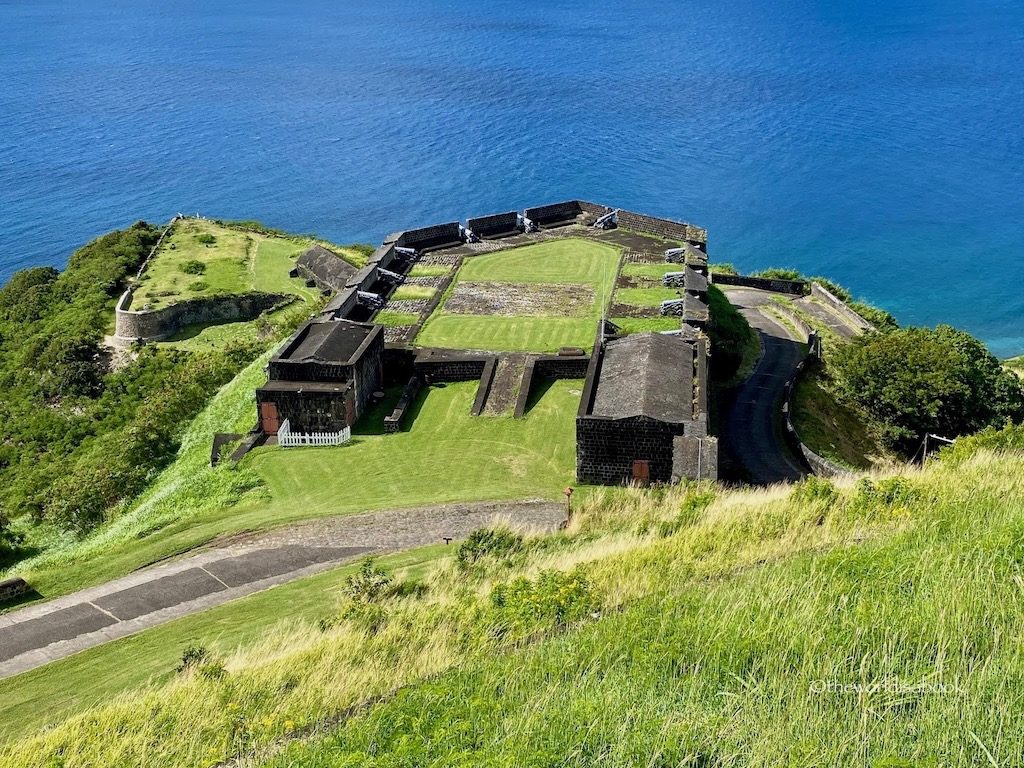
The Society for the Restoration of Brimstone Hill, founded in 1965, restored Brimstone Hill Fortress in the 20th century. The Prince of Wales Bastion was the first structure completely restored in 1973 which is now used as a banquet, conference and events center.
Many other restorations followed over the years. It became a UNESCO World Heritage Site in 1999 for its architectural, cultural and historical significance. Restorations and stabilization of current structures are ongoing to ensure this fortress will be around for future generations.
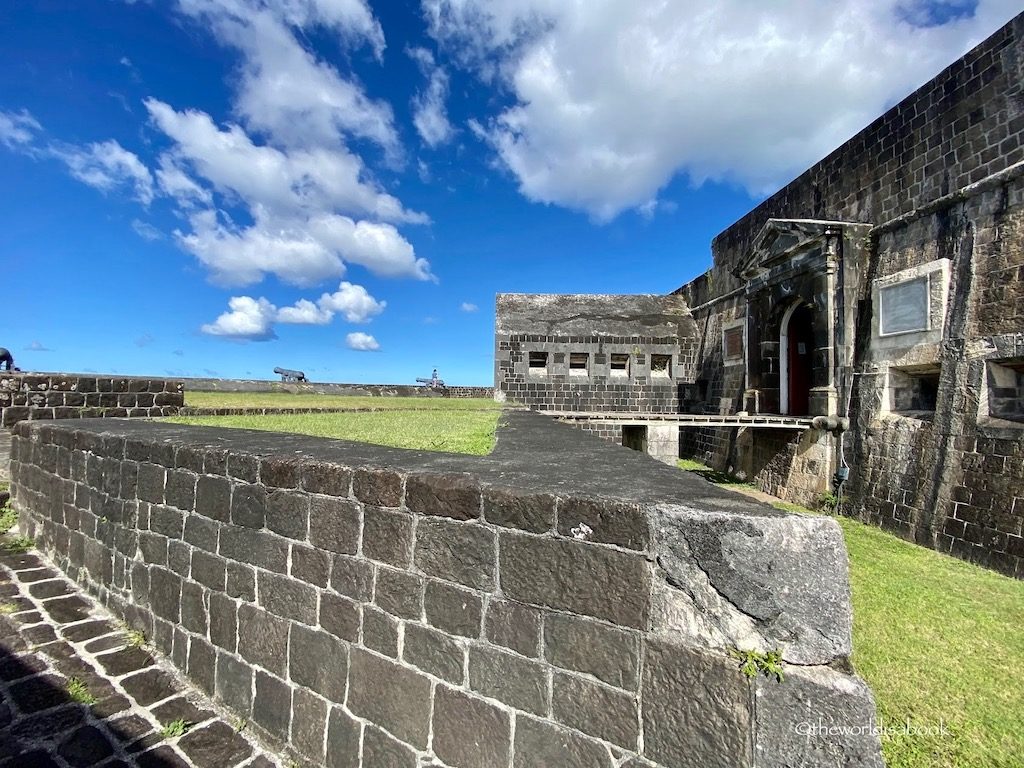
Getting to Brimstone Hill Fortress
We drove through several villages and towards the northwestern part of the island. One of the good things about this tour was it gave us an idea of how the locals otherwise known as the Kittitians live. We learned some of the history of the island including its painful slavery past and how sugar cane once ruled here.
It was hard to miss the massive structure on top of the hill from the main road. Brimstone Hill rises at almost 800 feet from the sea level. This was the forested area leading up to the fortress.
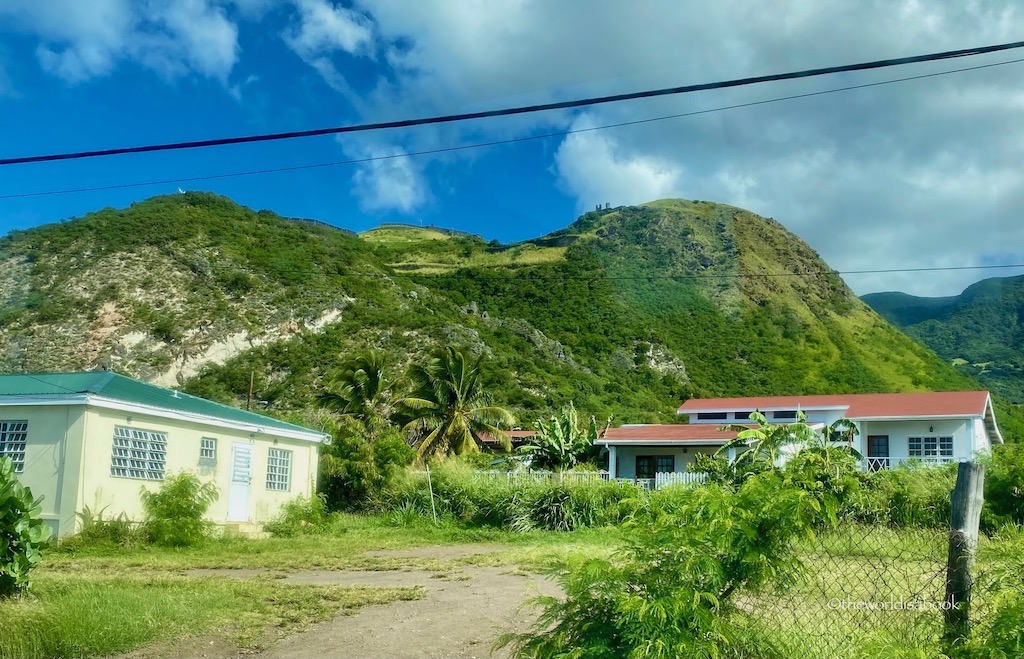
It was a tight squeeze for the van as we went through the arched gate entrance. Those arches, narrow roads and tight turns can be quite challenging.
Try to get someone else to drive you here if possible. As we climbed up to the gate, the construction and sturdiness of the walls were very impressive.
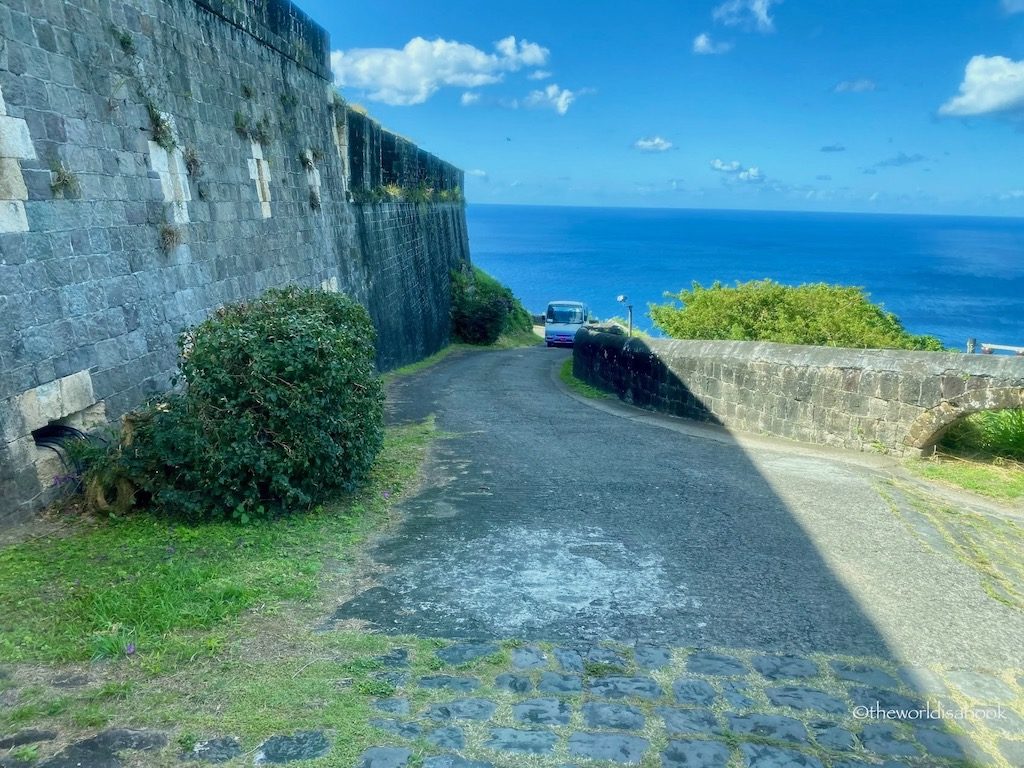
This area was surprisingly massive and extensive. With our cruise ship in port, there were several vans already in the main parking area. If you’re not coming here on a cruise ship, try to plan your trip here when there are no ships in port for lesser crowds.
Impressions of the Brimstone Hill Fortress
What first struck me when we got there was how green the surrounding areas were. The lush mountain stood as a beautiful backdrop on the inland side.
Its lush surroundings reminded me a lot of Kauai in the Hawaiian islands. The surrounding areas clearly showed why it deserved designation as a national park.
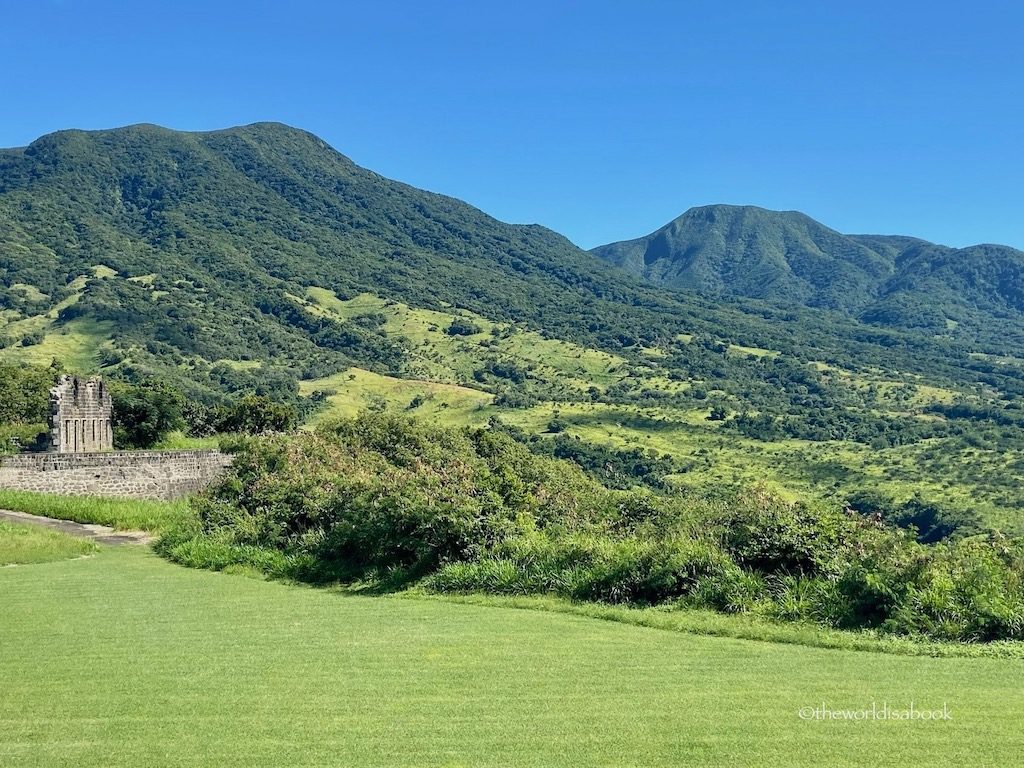
The whole fortress was a very well maintained area. It was considered an an “integrated complex” of structures that included various barracks, bastions, battlements, residences, roads and retaining walls among other things.
Since it took almost a century to complete, the structures represent various time periods of design and construction. Many important structures survived the elements of time and weather. Efforts were made to stabilize several structures and ruins.
Start off at the visitor’s center which has an Orientation Room that shows about a 10-minute introductory video (in various languages) on the history of the fortress. This building was the restored Commissariat building and also has the gift shop. Across the shop is the stored Warrant Officers’ Quarters which gave a glimpse on how they lived.
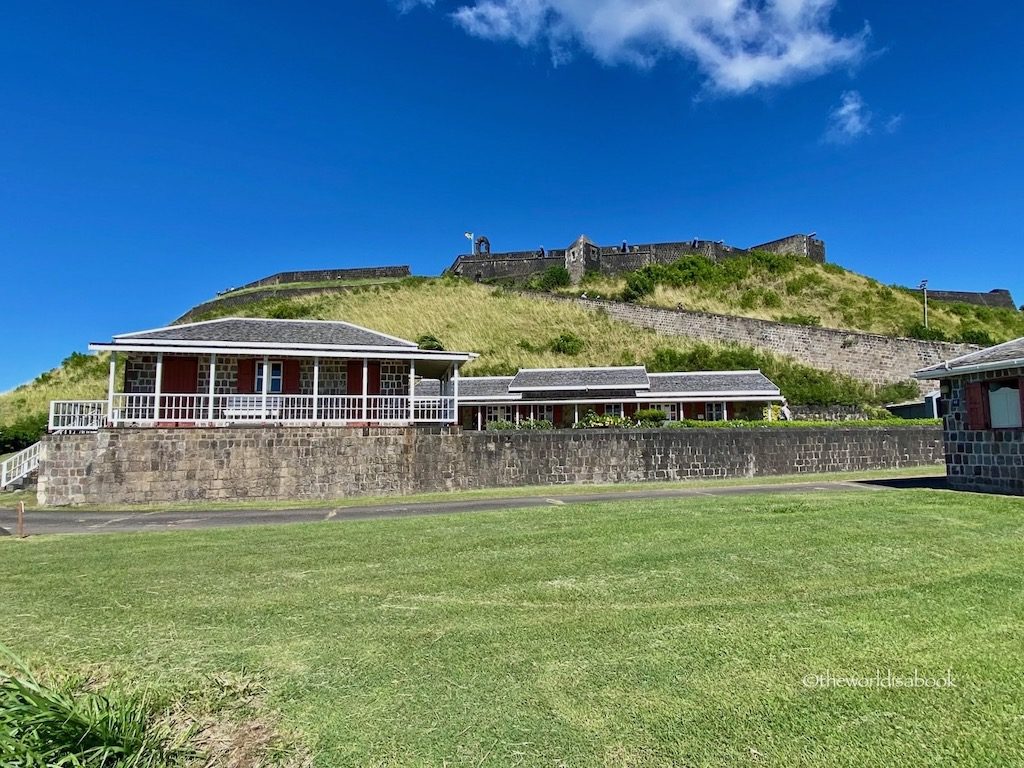
The Citadel of Brimstone Hill Fortress
The Citadel, also known as “heart of the fortress”, is about 15 hectares (2.5 acres). It contains the Fort George museum, preserved rooms and many cannons. It also offers the best views from the fortress. Do not miss this if you only have a limited time.
This was considered one of the best preserved surviving example of 18th century polygonal system fortification. According to the U.S. National Park Service, this polygonal design was the prototype the British used to build their other fortifications in North America.
It was a pretty steep climb up to the citadel. Watch your steps and hold the rails. I can’t imagine how slippery it gets here on a rainy day. But, it was definitely worth the climb.
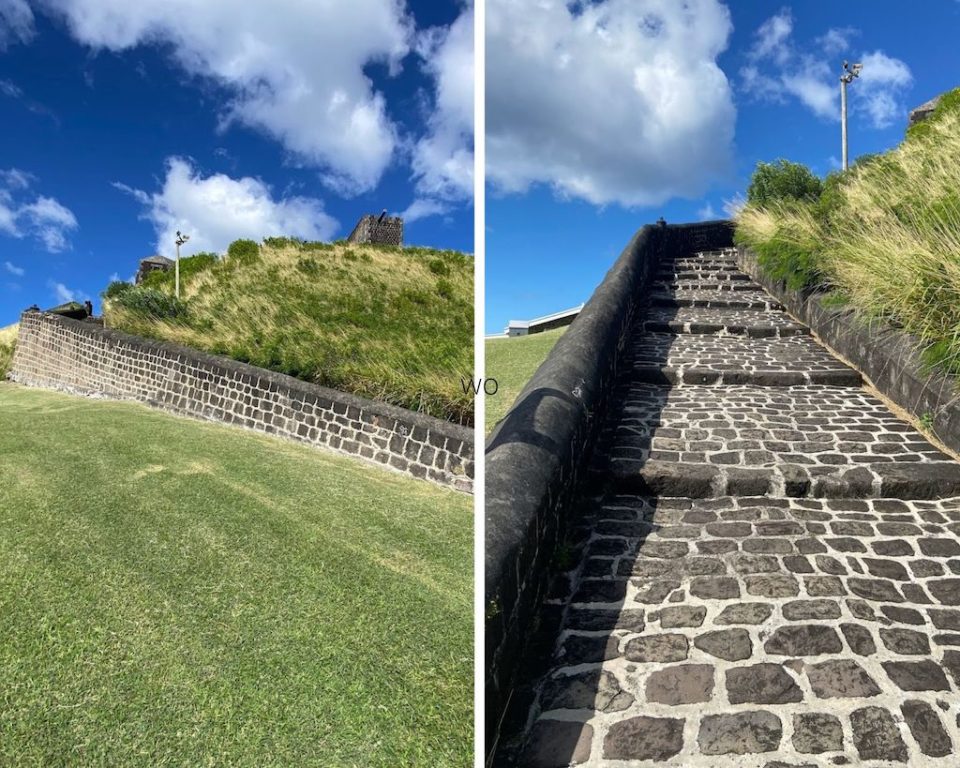
The stairs/ramp led us to the Western Place of Arms. There were three cannons here looking out into the Caribbean Sea and some neighboring islands of Saba and St. Eustacias. We were lucky being here on a clear day and the views were beautiful.
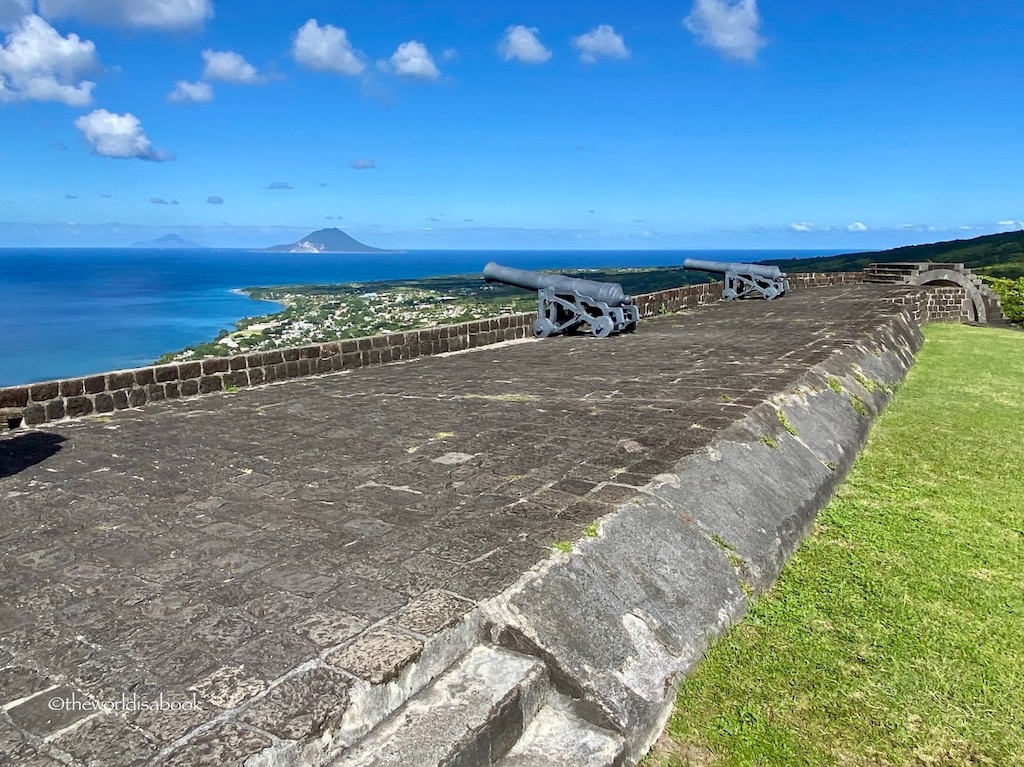
This volcanic hill provided great strategic location and vantage points of oncoming attacks especially coming from the sea. We crossed the bridge over a dry moat to enter the Fort George Museum. It almost felt like going into a castle ruin.
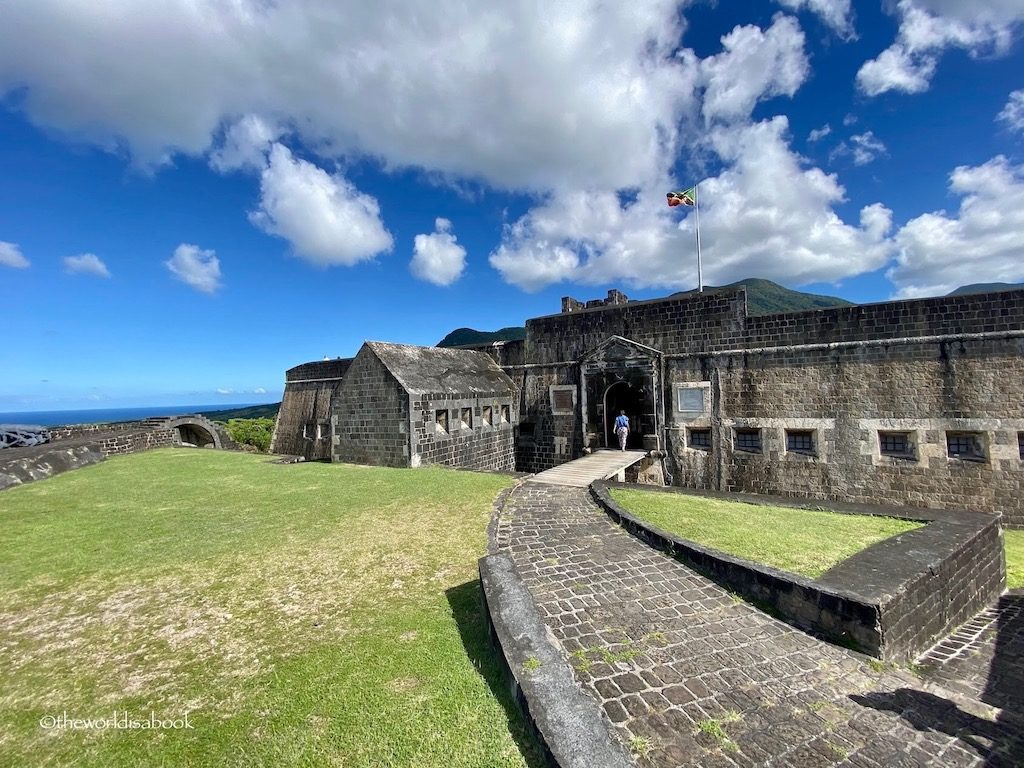
Fort George Museum in the Citadel
There were two levels to this structure. The upper part led to the Eastern Place of Arms. This area had more cannons pointed inland towards the mountains. Those cannons were pretty impressive up close. They really covered all their bases and attack points.
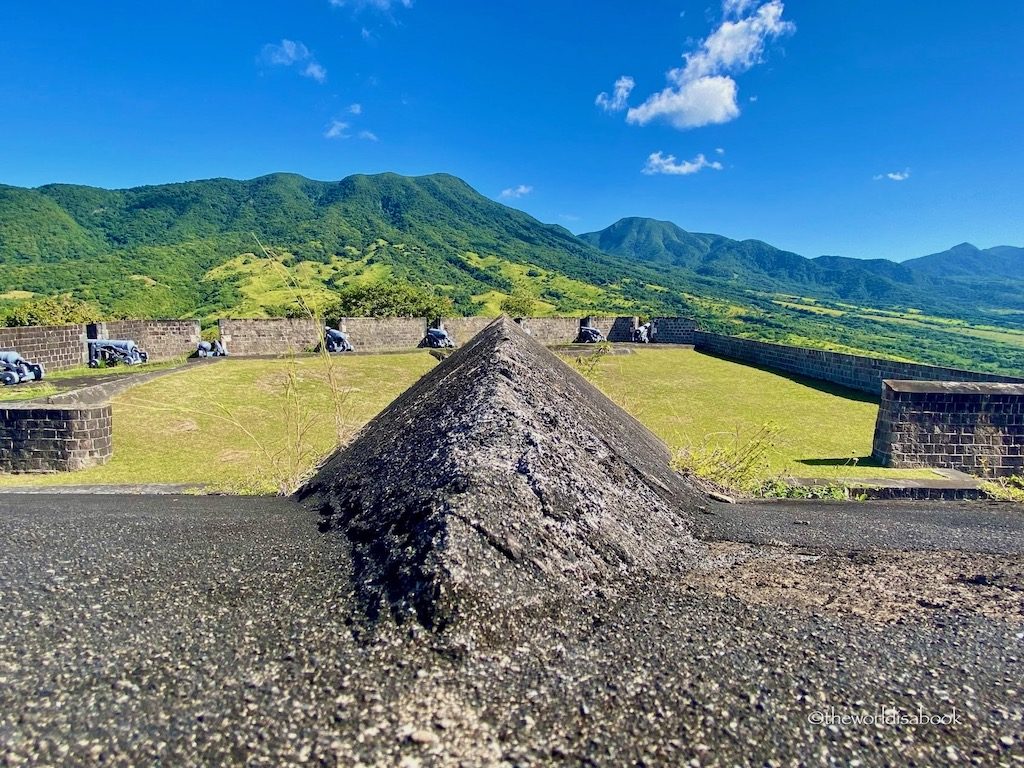
Don’t miss ringing the historic Tower Bell. While there are no historical records for it main purpose, there are many speculations that they used it to tell the fortress residents of daily activities like meal times and changing of the guards.
It’s old school alarm system. It could have probably also been used as a warning in the event of any impending attack.
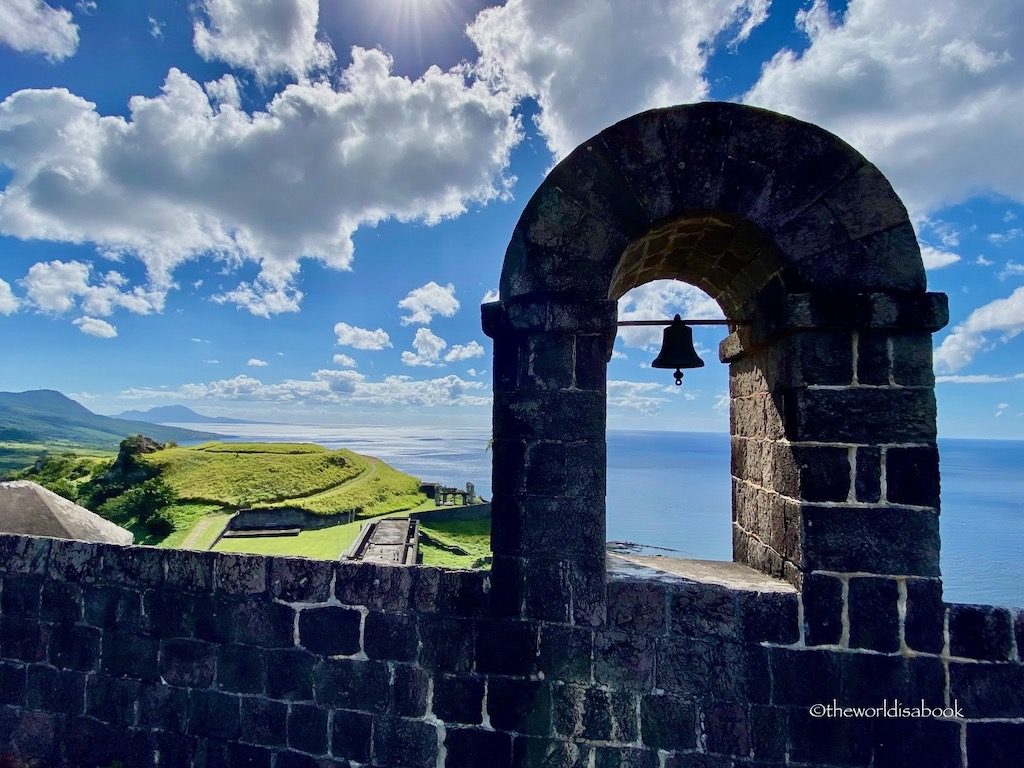
The bottom area is where to see some of the restored barrack rooms, quarters, bake ovens. There was so much information on the fortress’ history and details on the daily lives of the soldiers and slaves within the museum.
We saw rooms that included where the soldiers fired muskets during close attacks. It was also troubling to see the area used as a prison cell with only a mattress and a urine bucket.
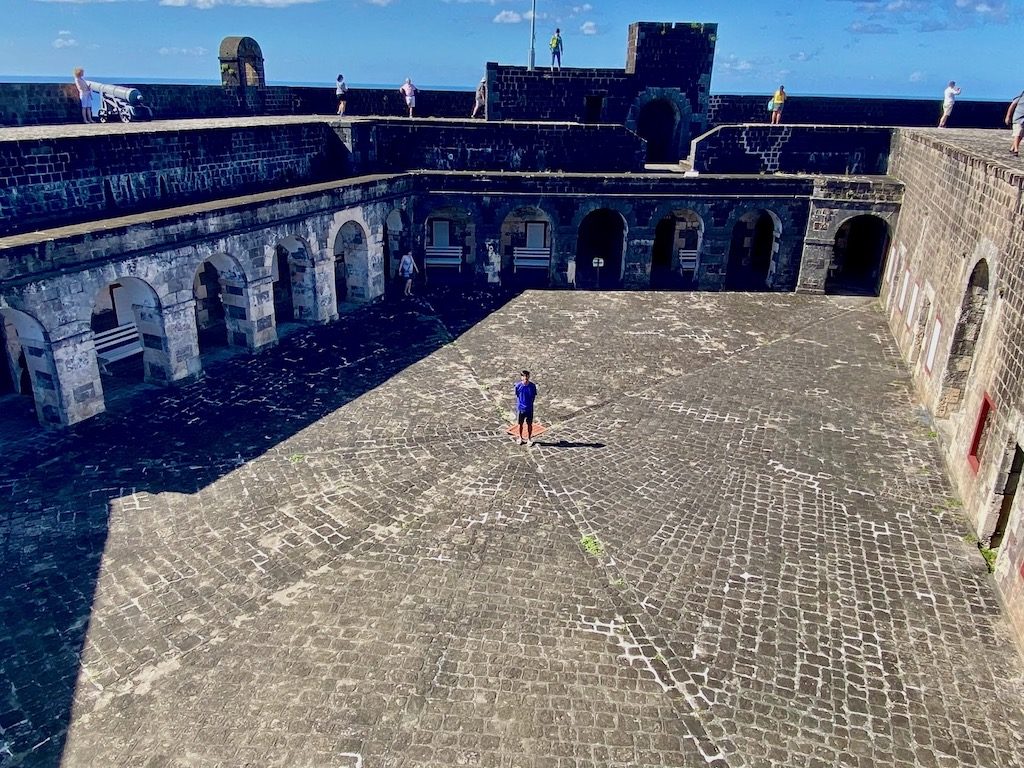
This was a very interesting walk through history. I wish we had a bit more time to read through all the information.
With the many information boards, we could somewhat imagine the hard lives the soldiers endured and even more so, the slaves. It was also a glimpse into how the soldiers, slaves and residents co-existed in this small community.
If you’re traveling with kids or just a kid at heart, you can even pose with a cutout here. It’s a great way for kids to see how the British soldiers dressed during that era.
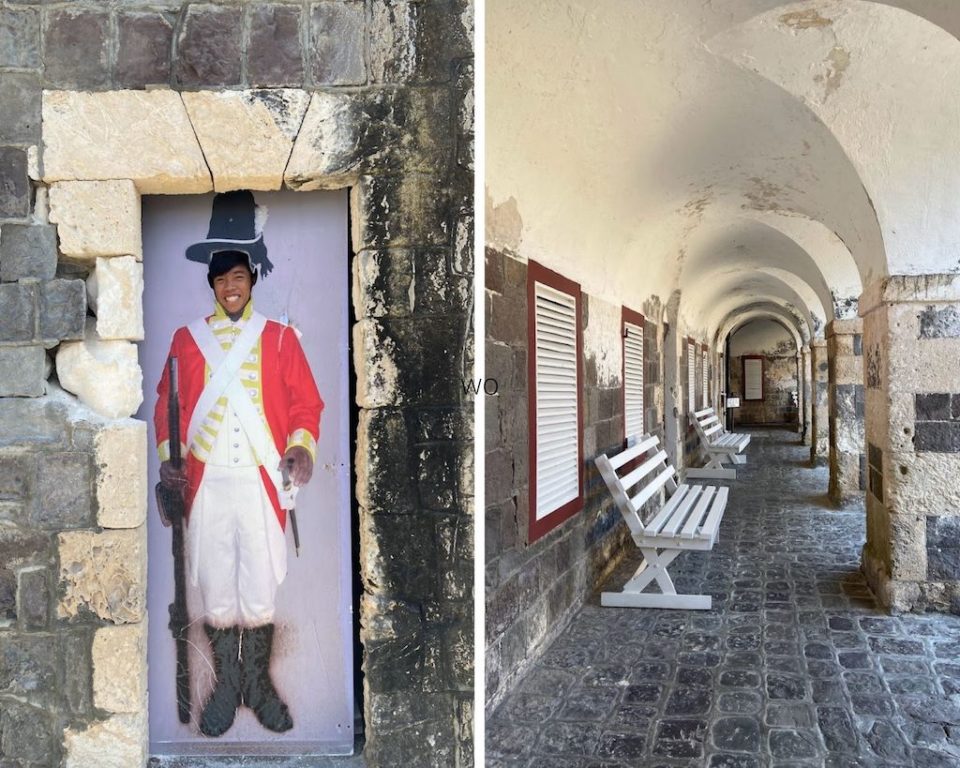
Monkey Hill
There was another area on the other side of the parking lot with a big green hill and some ruins worth exploring. These are the ruins of the Artillery Officers’ quarters. I loved the arches on these ruins. The back area had remnants of the cookhouse to prepare and cook for the officers.
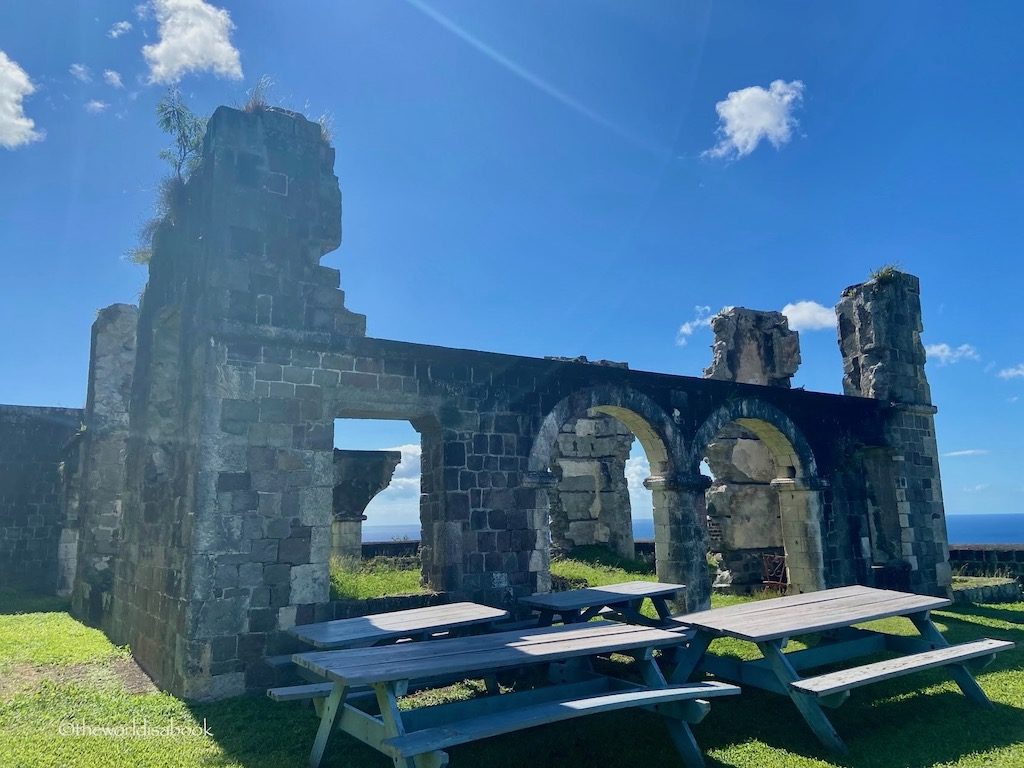
This former two-story structure was considered the fortress’ finest residence at one time. It was easy to see why with views of the citadel on one side and panoramic ocean views all around. There were picnic benches here which was a wonderful spot to enjoy the views and the area.
Don’t miss the grassy slope above the Artillery Officers’ quarters. The Governor’s House once stood here. This was once called Fort Charlotte but now known as Monkey Hill for the monkeys usually found here.
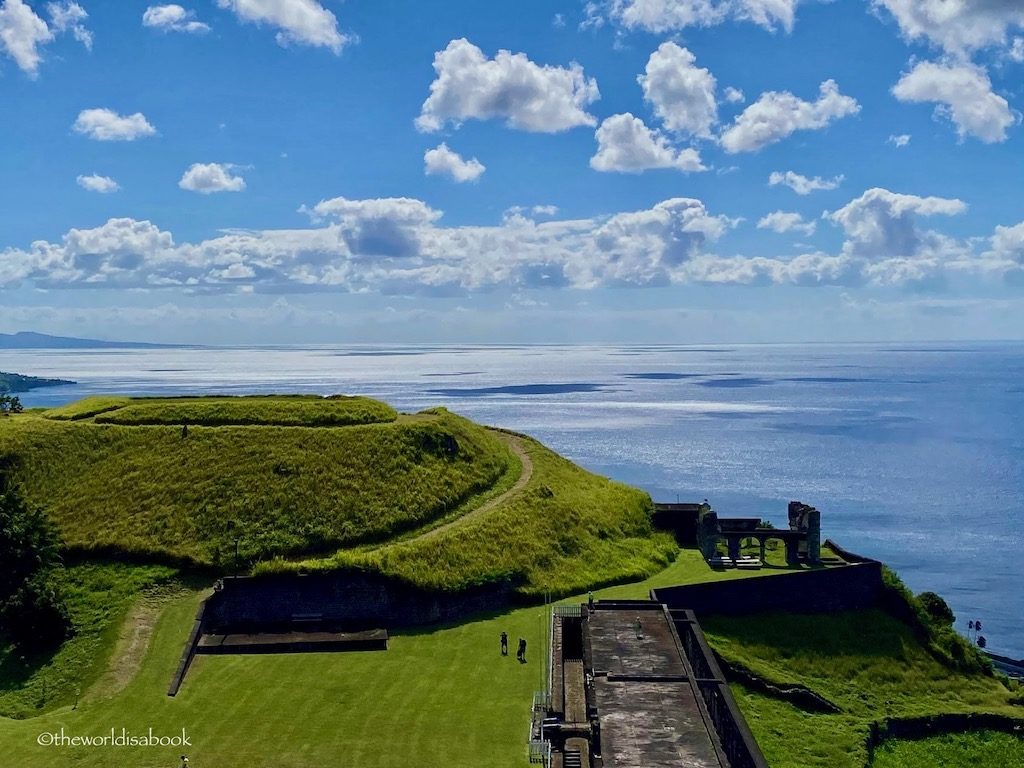
While we didn’t see the primates up here, we did see a couple on the main road leading up to the fortress. Our driver briefly stopped after spotting them go into the woods and we watched them swung on the trees.
You can find wild monkeys around St. Kitts. We found men with baby monkeys that you can pose with on some tourist spots like the Timothy Hill lookout or at the cruise port area. Stories say the French brought the monkeys as pets or to annoy the British too.
If you are visiting the island of St. Kitts, do not miss visiting Brimstone Hill Fortress National Park. This was an architectural marvel as well as an interesting museum. Plus, the surrounding views are just breathtaking. A visit here, no matter how short, is well worth your time.
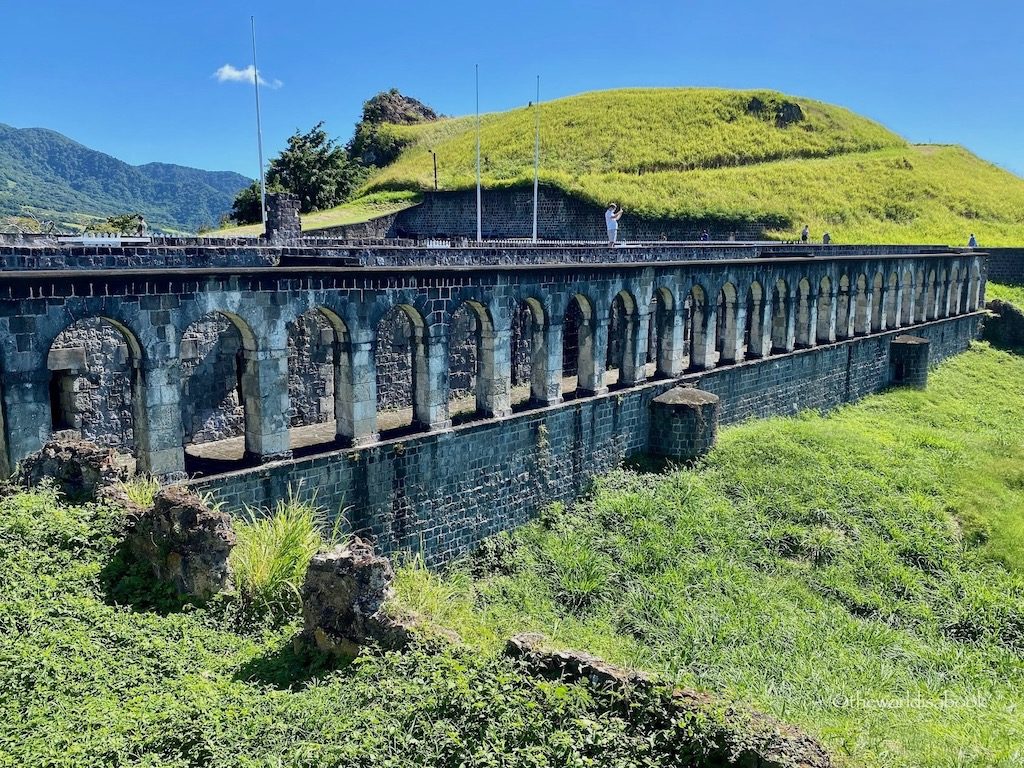
Tips for Visiting Brimstone Hill Fortress National Park
- The fortress is open daily from 9:30 AM – 5:30 PM.
- Admission is $15. Our cruise tour included this fee. Children 10 years old and under are free.
- If you are on the island on a cruise, book one of the tours from the cruise line or get a tour guide once you get off the ship. Many island tours will usually include the fortress. Get a price quote beforehand whether you want a private tour or with a group.
- If you’re renting a car to visit the fortress, get a small or compact one. The entrance arch is narrow and there are several hairpin turns and steep roadways to navigate.
- Wear comfortable walking shoes (no flip flops). You will be doing a lot of walking around the fortress. There are uneven surfaces and some hilly areas too.
- There is a snack shop to purchase food and drinks on the premises. Expect to pay a premium. Toilets are also available.
- Bring some water or drinks when you climb the Citadel.
- Bring a hair tie. It was hard to take proper pictures with hair all over the place.
- If you’re visiting during the warmer/summer months, wear sunscreen and visit earlier in the day to avoid the mid-day heat.
- Carry some cash for tipping your driver/tour guide, snacks at the fortress and for buying souvenirs around the port or anywhere else you may stop.
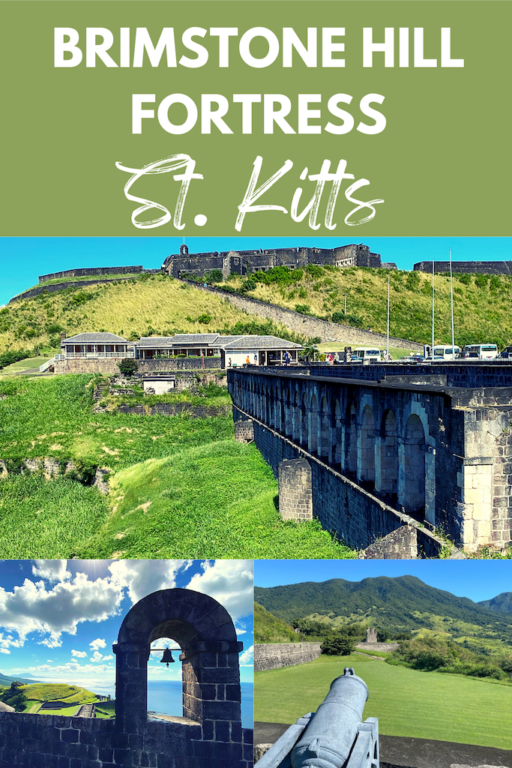
I visited this site two weeks ago while on a cruise